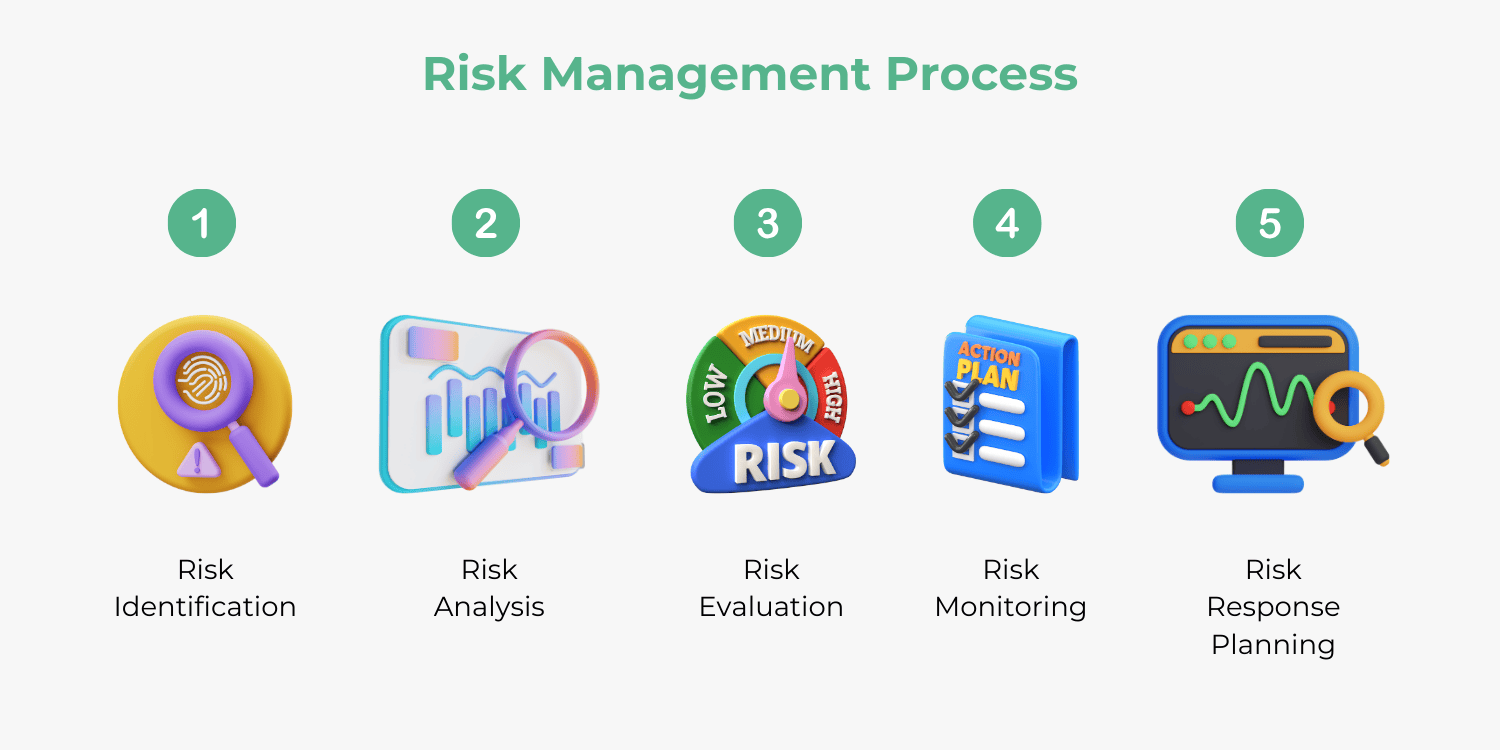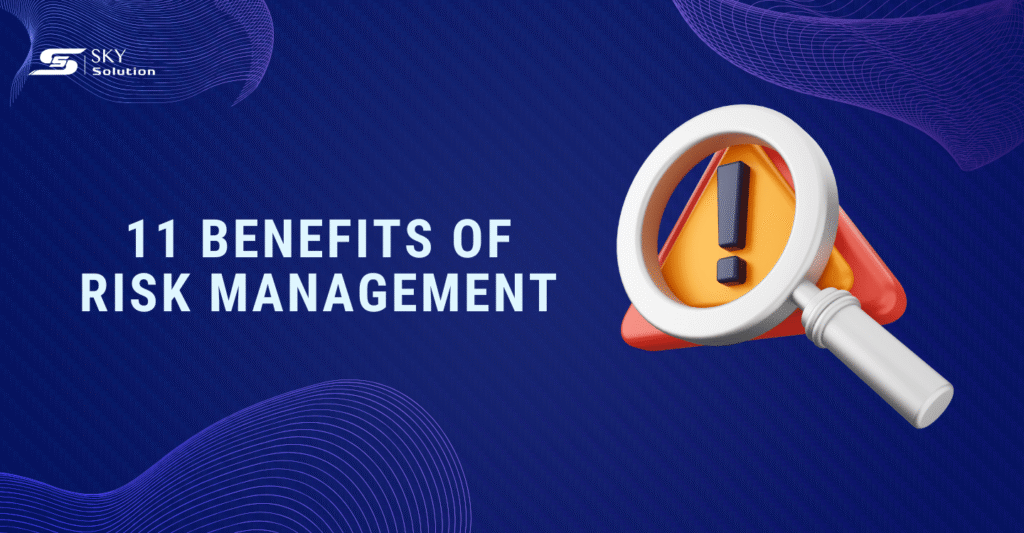In today’s fast-paced business environment, understanding the benefits of risk management is essential. Every organization, regardless of its size, encounters risks that can impact its operations and objectives. By implementing a risk management process, businesses can identify, evaluate, and address potential threats before they escalate. This proactive approach not only protects resources but also cultivates a culture of resilience.
Understanding Risk Management
Risk management is the process of handling unexpected situations that may hinder an organization’s objectives. It includes a series of activities such as identifying, assessing, and controlling threats to an organization’s capital, earnings, and operations. There are different types of risks in project management: financial risks, technical risks, organizational risks, and more. Being proactive in analyzing project risks early can help businesses develop strategies to successfully address threats.
Risk management is more important to business success than it is now. These days, organizations face increasingly complex problems due to the rapid development of the world. Emerging risks are continuously arising, often stemming from and being driven by the widespread use of technology.
In many companies, project managers and the board of directors are refreshing their strategies to their risk management strategies. Companies are analyzing their risk exposure, reviewing their existing processes, and reconsidering who should be involved in risk management. They are gradually developing a new proactive approach to risk management to prevent past risks and adjust practices before new risks cause harm. More companies are showing increased interest in sustainability and resilience, leading them to implement AI technologies to improve risk management
Risk Management Process
The risk management process includes several phases, which are essential for helping organizations understand their vulnerabilities and take appropriate measures.
- Risk Identification: Detecting potential risks that could affect the business.
- Risk Analysis: Assessing the likelihood and impact of identified risks.
- Risk Evaluation: Evaluate and prioritize the risks according to business objectives.
- Risk Response Planning: Developing strategies to manage risks effectively.
- Risk Monitoring: Continuously tracking risks and adjusting strategies as necessary.

For a deeper understanding of these stages, you may find resources like ISO 31000 standard helpful.
Risk Mitigation in Project Management
Risk mitigation in project management is crucial for keeping projects on track. By identifying risks early, project managers can develop contingency plans, ensuring projects stay on time and within budget while focusing on the objectives.
You can refer some several strategies to mitigate risks at: 10 Key Types of Risks Project Management You Need to Know
Benefits of Risk Management
Implementing a risk management process can bring significant benefits to an organization, including:
- Improved the quality of decision-making: Decision-making improvement is one of the many benefits of risk management. By understanding the risks associated with different courses of action, leaders can weigh options more carefully, leading to outcomes that align better with strategic goals.
- Improved operational efficiency: By identifying and addressing potential risks early, businesses can streamline processes, reduce delays, and avoid costly disruptions. This leads to smoother operations, lower overhead, and enhanced productivity across all areas of the organization.
- Resource optimization: Risk management also promotes resource optimization. With a clear understanding of risks, organizations can allocate resources more efficiently, ensuring that they are focused on areas that drive value and mitigate potential losses.
- Financial Stability: By proactively identifying, assessing, and addressing potential risks, organizations can minimize unexpected financial losses and avoid costly disruptions.
- Increased stakeholder confidence: Actively managing risks fosters increased stakeholder confidence. When stakeholders see that an organization effectively identifies and mitigates risks, they are more likely to invest support, knowing that their interests are safeguarded. Building this trust is crucial for long-term relationships and organizational success.
- Regulatory compliance: Staying compliant with industry regulations is increasingly important. By adopting risk management principles, organizations can ensure that they adhere to necessary regulations and standards, thus avoiding penalties and maintaining their reputation in the market.
- Improved workplace safety and security: Effective risk management helps identify potential hazards and mitigate them before they cause harm. By proactively addressing safety concerns, businesses can create a safer work environment, reduce accidents, and ensure the well-being of employees, ultimately fostering a more secure and productive workplace.
- Preserved brand image: Risk management plays an important role in protecting your brand from reputational risks. For example, if your company has a risk management plan that sets clear ethical guidelines for employees, addresses how to make public statements, and provides strategies for responding to public concerns, you can significantly reduce exposure to reputational damage.
- Improved employee productivity: By identifying and mitigating potential risks, businesses can create a safer and more stable working environment. Employees can focus on their tasks without the constant concern of unexpected disruptions, leading to improved efficiency and morale. Risk management strategies, such as providing proper training, ensuring workplace safety, and maintaining clear communication, reduce downtime caused by accidents or unforeseen challenges. This proactive approach empowers employees to work with confidence, ultimately driving higher performance and greater overall productivity.
- Opportunity identification: By understanding risks better, organizations can also spot potential opportunities for growth and innovation—turning challenges into stepping stones for progress.
- Better crisis management: Risk management significantly enhances crisis management by providing a proactive foundation that minimizes the likelihood and impact of potential crises. Through identifying and addressing vulnerabilities, organizations are better prepared to anticipate disruptions and develop contingency plans, ensuring a faster and more organized response. Effective risk management reduces the severity of crises by mitigating risks in advance, allocating resources efficiently, and guiding informed decision-making under pressure.
Conclusion
By integrating a robust risk management process into business operations, organizations can enjoy numerous advantages that lead to improved performance and stability. From financial security to enhanced decision-making, understanding the benefits of risk management paves the way for a resilient future. Businesses are encouraged to actively engage in risk management practices to not only protect themselves but also capitalize on new opportunities that arise.
For more information on risk management strategies, check out resources from the Project Management Strategies.

